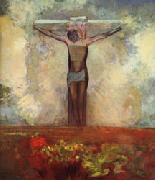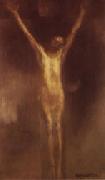
Oil On
Canvas, Real Flavor of Old Masters
|
Duccio di Buoninsegna
|
|||
|
|
|||
| 1255-1318 Italian Duccio di Buoninsegna Locations Italian painter. He was one of the most important painters of the 14th century and like his slightly younger contemporary, Giotto, was a major influence on the course of Italian painting. An innovator, he introduced into Sienese painting new altarpiece designs, a dramatic use of landscape, expressive emotional relationships, extremely complex spatial structures and a subtle interplay of colour. His most important and revolutionary work, the Maeste for Siena Cathedral, was never matched during the 14th century, if at all, and his influence lasted well into the 15th century. | |||
|
|
|||
|
|
Crucifixion Duccio di Buoninsegna4.jpg Painting ID:: 261 Visit European Gallery |
Museo dell'Opera del Duomo, Siena | |
Height Width |
INS/CM |
||
|
X |
|
||
|
|
|||
|
Simon Vouet
|
|||
|
|
|||
|
|
|||
|
|
Crucifixion Nicolas Poussin79.jpg Painting ID:: 10140 Visit European Gallery |
1622 Oil on canvas, 375 x 225 cm Chiesa del Gesu Genoa | |
Height Width |
INS/CM |
||
|
X |
|
||
|
|
|||
|
Odilon Redon
|
|||
|
|
|||
| French Symbolist Painter, 1840-1916 Bertrand-Jean Redon, better known as Odilon Redon (April 20, 1840 ?C July 6, 1916) was a Symbolist painter and printmaker, born in Bordeaux, Aquitaine, France. Odilon was a nickname derived from his mother, Odile. Redon started drawing as a young child, and at the age of 10 he was awarded a drawing prize at school. At age 15, he began formal study in drawing but on the insistence of his father he switched to architecture. His failure to pass the entrance exams at Paris?? Ecole des Beaux-Arts ended any plans for a career as an architect, although he would later study there under Jean-L??on Gerôme. Back home in his native Bordeaux, he took up sculpture, and Rodolphe Bresdin instructed him in etching and lithography. However, his artistic career was interrupted in 1870 when he joined the army to serve in the Franco-Prussian War. At the end of the war, he moved to Paris, working almost exclusively in charcoal and lithography. It would not be until 1878 that his work gained any recognition with Guardian Spirit of the Waters, and he published his first album of lithographs, titled Dans le R??ve, in 1879. Still, Redon remained relatively unknown until the appearance in 1884 of a cult novel by Joris-Karl Huysmans titled, À rebours (Against Nature). The story featured a decadent aristocrat who collected Redon's drawings. In the 1890s, he began to use pastel and oils, which dominated his works for the rest of his life. In 1899, he exhibited with the Nabis at Durand-Ruel's. In 1903 he was awarded the Legion of Honor. His popularity increased when a catalogue of etchings and lithographs was published by Andr?? Mellerio in 1913 and that same year, he was given the largest single representation at the New York Armory Show. In 1923 Mellerio published: Odilon Redon: Peintre Dessinateur et Graveur. An archive of Mellerio's papers is held by the Ryerson & Burnham Libraries at the Art Institute of Chicago. In 2005 the Museum of Modern Art launched an exhibition entitled "Beyond The Visible", a comprehensive overview of Redon's work showcasing more than 100 paintings, drawings, prints and books from The Ian Woodner Family Collection. The exhibition ran from October 30, 2005 to January 23, 2006. | |||
|
|
|||
|
|
Crucifixion Odilon Redon_wBLqzB.jpg Painting ID:: 11684 Visit European Gallery |
ca 1910 10'' x 1' 6 1/2''(25.7 x 47.1 cm)Bequest of Mrs.Ari Redon,1982 | |
Height Width |
INS/CM |
||
|
X |
|
||
|
|
|||
|
Eugene Carriere
|
|||
|
|
|||
| French Symbolist Painter, 1849-1906 French painter and lithographer. He is best known for his spiritual interpretations of maternity and family life. Characteristic are his Crucifixion and Maternity (both: Louvre). He also painted some large canvases for the Sorbonne and the Hôtel de Ville, Paris. Among his works are many notable portraits, including those of Verlaine, Daudet, and Edmond de Goncourt. | |||
|
|
|||
|
|
Crucifixion Eugene Carriere_VCj9sF.jpg Painting ID:: 11691 Visit European Gallery |
Salon of 1897 7 5 1/4'' x 4 3 1/4''(227 x 130 cm) | |
Height Width |
INS/CM |
||
|
X |
|
||
|
|
|||










